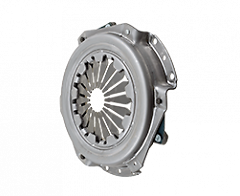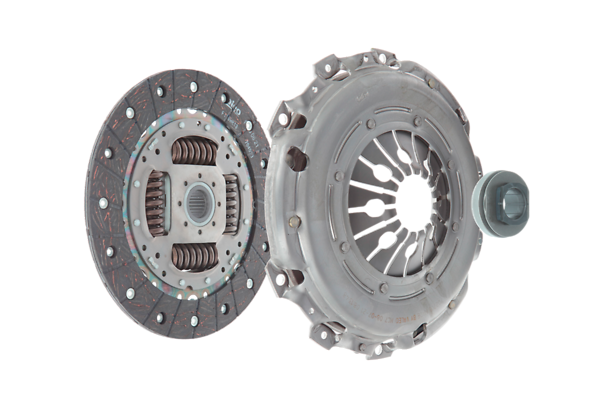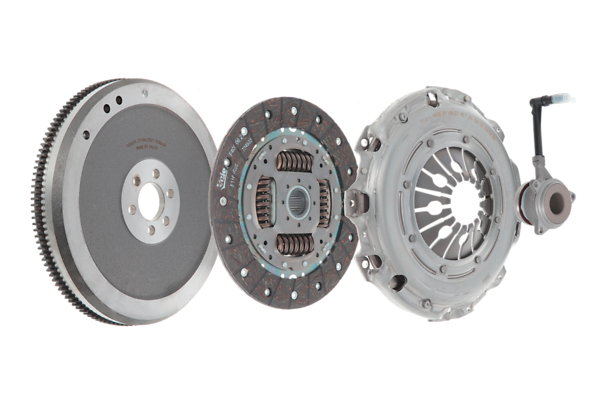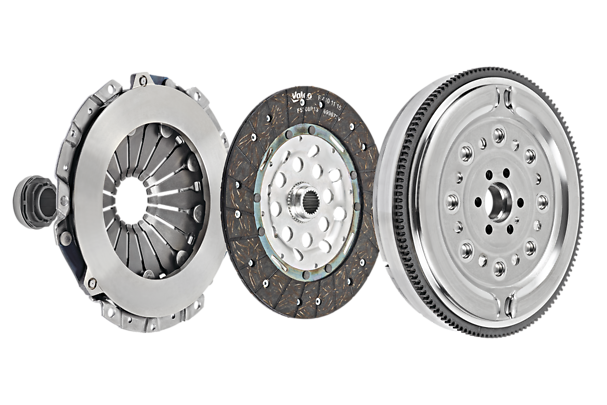Valeo Car Clutch - Slave Cylinders

Evolving space constraints and other regulations have made it increasingly difficult for manufacturers to fit a cable in a straight line between the clutch pedal and lever.
These constraints are why more and more new cars use hydraulic clutch systems.
These systems include parts not seen in other clutch setups, such as the Concentric Slave Cylinder, also known as the Clutch Slave Cylinder.
How Do Hydraulic Clutches Work?
The semi-hydraulic and fully-hydraulic brake system design is based on the same principle as hydraulic brakes.
This layout consists of a transmitter (CMC), a hose and a receiver. In fully-hydraulic systems, the receiver is the concentric slave cylinder (CSC).
Until the mid-1990s, the clutch hydraulic release system technology was similar to brake hydraulic technology. It consisted of an aluminium master cylinder and a cast iron release cylinder connected with a pipe made of steel and rubber.
Advantages of Concentric Slave Cylinders
Hydraulic clutches offer greater flexibility and reliability compared to mechanically actuated clutches.
They also have several other advantages. Hydraulic clutches enable an optimal, constant pedal effort. They are more compact and made from a much lighter material than standard clutches, allowing a 70% weight reduction.
This improvement is the main reason this technology is easier to implement on OE projects.
One major advantage of the CSC is eliminating the fork and the release bearing.
This means there are no more deformations of the fork under load and the release system efficiency is increased. Therefore the pedal load is reduced. The CSC is concentric to the gearbox input shaft, which reduces the number of components, facilitating vehicle assembly.
The complete hydraulic function is 70% lighter due to the disappearance of the release bearing, the fork, and the guiding tube. The subassembly weight is about 1,000 grams.
The full function with bearing, fork, and guiding tube weighs about 1,700 grams. Since the early 1990s, the widespread use of plastic materials and CSCs has led to considerable weight and cost reductions.
What Does a Clutch Slave Cylinder Do?
The CSC is a hydraulic cylinder with an integrated release bearing which eliminates the clutch lever and the conventional release bearing. It is connected to the master cylinder via a hose.
The CSC is in direct contact with the clutch cover diaphragm, increasing the efficiency of the hydraulic system.
Where Is the Clutch Slave Cylinder Located?
In vehicles equipped with fully-hydraulic clutches, the CSC is located inside the transmission housing, fixed onto the clutch. The CSC is connected to the CMC via a hydraulic pipe.
Clutch Slave Cylinder Replacement
The replacement of the part takes much longer than in semi-hydraulic systems.
In fact, it takes the same time as a clutch replacement. Therefore, we recommend systematically changing the CSC when replacing a clutch.
Watch our free webinar on the Top 5 causes of concentric slave cylinder leaks to learn how to identify leaks and best practices for handling CSCs.
Valeo Hydraulic Clutches
Fully-hydraulic car clutches have become popular, with already 131 million vehicles equipped with a CSC.
Valeo now offers a range of over 150 part numbers covering key applications such as the Fiat 500, Punto, Ford Fiesta, Focus, Hyundai Sonata, Mercedes A-Class, Opel Corsa, Renault Clio, Megane, Ssangyong Actyon, and Volkswagen Transporter.
In response to this market trend, Valeo has developed a wide range of hydraulic clutch parts:
You can find the CMC in both semi-hydraulic and fully-hydraulic systems, whereas the CRC is specific to semi-hydraulic clutches while the CSC is only found in fully-hydraulic clutch systems.
Valeo also offers the Valeo Kit4P clutch kit with an optional CSC.







